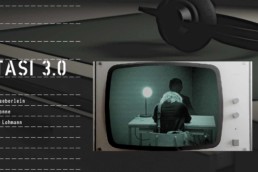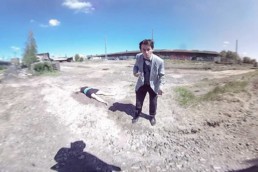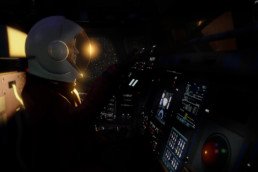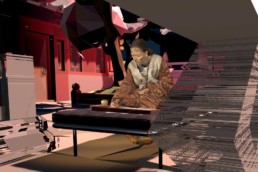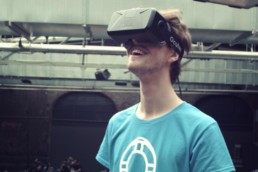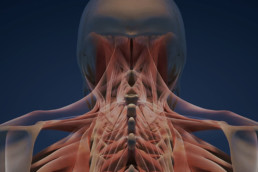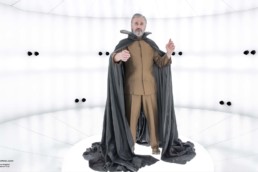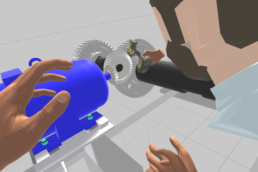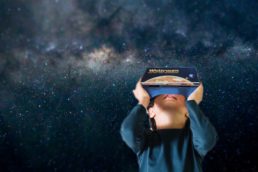Innovation Lab
Industry 4.0 with VR&AR
Defining the future with VR/AR in the industry
Trotzkind offers state-of-the-art applications for planning your own projects. From virtual modelling to the simulation of process sequences, immersive media provides a broad range of digitised applications.
VR and AR applications are gaining in importance in the industry. The applications are developed especially for the needs of the respective companies. Immersive media is playing an increasingly important role especially in the automotive/aerospace industry, architecture and mechanical engineering. Whether it’s with simulations of workflows in VR or whether reality is enhanced with content in AR – the benefits of using virtual reality in the industry have long become obvious. Instructions can be given simply and quickly and workflows can be explained and illustrated step by step because presentation components can be exchanged easily.
Skilled trades recognise the potential of AR, VR & MR
Skilled trades have had to deal with the problem of skills shortage recently. On the one hand, this phenomenon arises because low-birthrate generations are entering the labour market, and on the other hand, the interest in skilled trades has declined among the younger generation. However, this generation of digital natives has grown up with a certain curiosity for modern technology and is constantly developing new skills. So the use of immersive media in skilled trades can have a double positive effect. On the one hand, work processes and training can be made more efficient; and on the other hand, the skilled trades experience a boom through a change in their image as they deal more and more with technologies such as VR, AR and MR.
New possibilities open up
Greatly reduced material and production costs for prototypes is accompanied by increasingly more efficient planning and project implementation. Virtual model making in particular is experiencing a significant improvement with the technical progress of VR glasses and AR applications. It is now possible to experience a virtual computer-generated or recorded 360-degree world and to interact in it. Panoramic images of cities and real estate are now standard.
Using VR, completely new possibilities are opened for the marketing of machines because the customer instantly builds a strong visual connection to the equipment. Interested buyers have the opportunity to view the new equipment or their vehicle fleet in 3D. They can move in any direction and look at specific points and even zoom in on them. This gives the user the feeling of being on-site. Engineers can also get a virtual idea of the future operation of the machines and the vehicles and better take into account possible changes based on these impressions.
From AR to simulation - the applications are versatile
In the aerospace or automotive industry, virtual reality offers the possibility of using simulations among other things. Whether it’s for planning, training or presentation, VR technology provides a cost-effective alternative for sharing knowledge. This is especially true if the replicated environment is very expensive, difficult to access or dangerous – modern immersive media excels here. The use of augmented reality can also provide an inexpensive solution for planning purposes. Augmented reality doesn’t mean replacing reality, as VR technology aims to do, but expanding it with information. The real world remains visible and tangible. But it is complemented by virtual elements that we can interact with. This can happen with displays such as Google Glasses or the Microsoft HoloLens; and there are already applications for your own smartphone or tablet, which can provide AR-like experiences.
Mixed reality as an intermediate path
Together with virtual reality (VR), mixed reality offers a promising future for companies. For example, instruction manuals are often complicated and time consuming. This not only applies to putting together a dresser at home, but also to machines in industrial halls. They not only need to be set up, but also maintained, and the instructions for doing so are usually difficult to handle during assembly. Using eyewear such as the HoloLens, visual information can be fed directly into the user’s field of view. This allows the employee to work directly on the real object while receiving visible instructions without losing focus on their field of work.
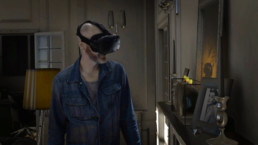
In architecture and interior design, customers can enter their home before it is built to experience and design their environment to their liking.
A great opportunity
It’s always about enriching reality with digital information or models. While virtual reality is already a big topic in marketing and product presentation, in many industries augmented reality is a great opportunity that is just beginning to open up. Production, logistics, development – immersive media technology is moving into ever more areas. Trotzkind helps you implement your new project ideas in VR/AR and offers the opportunity to take at decisive innovative step into the future. Our experience in the most diverse applications of immersive media forms the basis of the wide range of services we can support you with.


